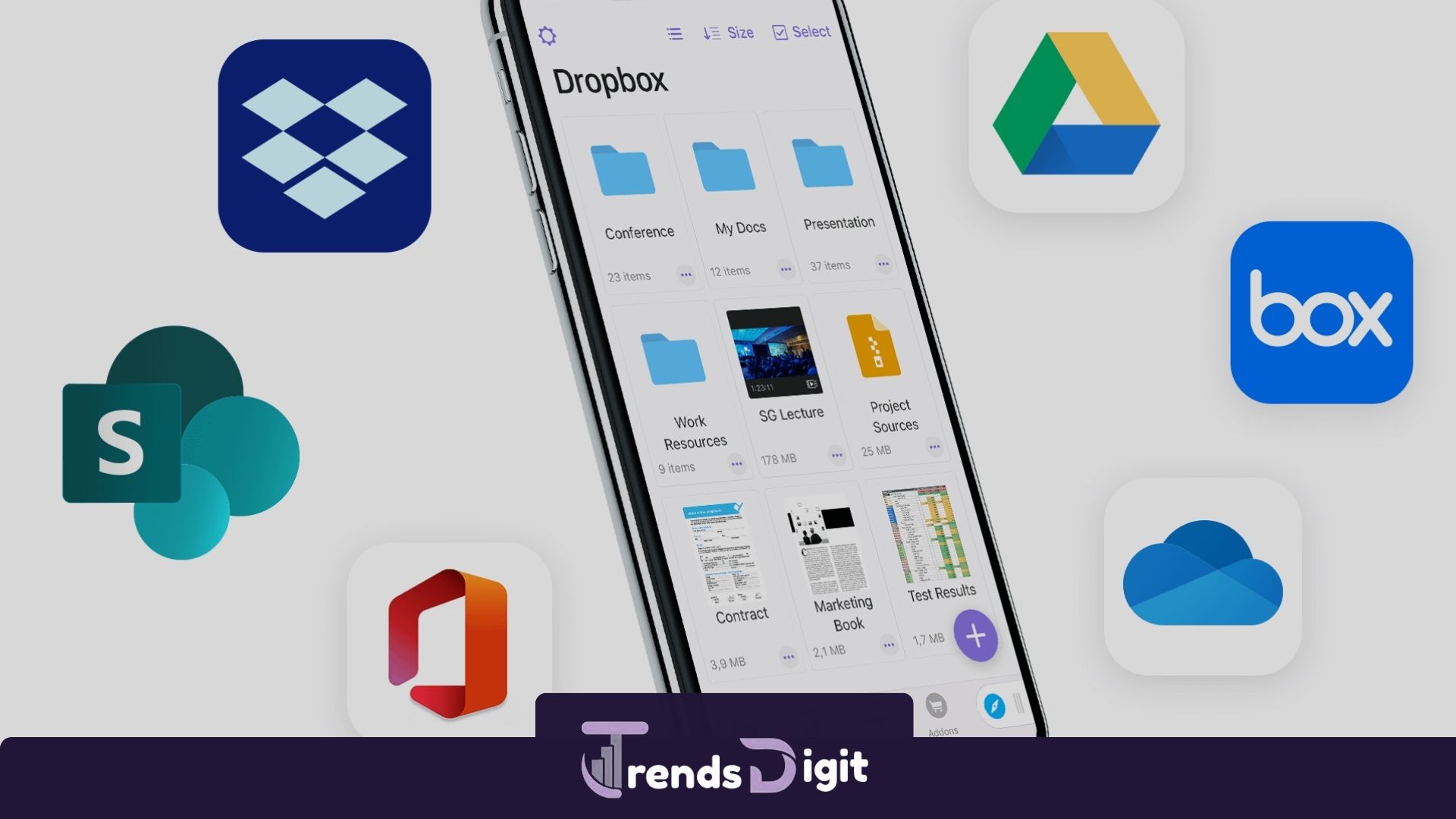Top 7 Productivity Apps for Remote Workers
The phrase “Top 7 Productivity Apps for Remote Workers” perfectly summarizes the goal of this article — to highlight seven powerful tools that help remote professionals stay focused, organized, and efficient. These apps streamline daily workflows, improve communication, and enhance performance for anyone working away from a traditional office. In this guide, you’ll learn why remote teams rely on productivity apps, how to select the right ones, and which seven deliver the best balance of usability, features, and reliability. Every tool listed here empowers you to manage tasks, communicate effectively, and achieve consistent results wherever you work.We at TrendigiNews have prepared practical and useful content for you.
.
Why Remote Workers Need Dedicated Productivity Apps
Remote work offers flexibility, yet it also introduces challenges such as distractions, unclear communication, and scattered information. Productivity apps bridge these gaps by creating a structured digital environment that mirrors the efficiency of an office. Without proper tools, remote professionals risk missed deadlines, duplicate efforts, and reduced accountability.
Modern productivity apps solve these issues through centralized task management, clear timelines, and real-time updates. They ensure that everyone knows their priorities and can collaborate easily across time zones. These platforms also provide automated reminders, shared dashboards, and transparent progress tracking. As a result, teams stay synchronized, and individuals maintain control of their time and focus.
Another reason productivity tools are essential lies in consistency. When working remotely, daily routines can fluctuate. Apps with reminders, time-blocking features, and integrated scheduling help maintain stable workflows. Whether you manage projects, communicate with teammates, or handle documents, the right software keeps your digital workspace organized and efficient.
.
How to Choose the Right Productivity Apps for Remote Work

Selecting a productivity app involves more than popularity or design. Remote professionals must evaluate tools based on fit, flexibility, and reliability. Below are five essential criteria that determine whether a tool will truly enhance your productivity.
Integration and Workflow Compatibility
Your productivity app should seamlessly integrate with your existing digital environment. If you already rely on calendars, email, file-sharing, and chat platforms, your chosen app must connect with them smoothly. Integration minimizes context-switching and helps remote workers complete tasks without juggling multiple tabs or devices. A good integration strategy keeps all your information synchronized and accessible.
Support for Real-Time and Asynchronous Collaboration
Remote work often means dealing with different time zones and schedules. The ideal productivity tool supports both live collaboration and asynchronous communication. Team members should easily assign tasks, leave notes, and update progress even when others are offline. Tools that balance these two modes make remote teamwork fluid and uninterrupted.
Visibility, Tracking, and Automation
Visibility ensures accountability. A strong productivity app gives you a complete overview of active tasks, responsibilities, and project timelines. Built-in automation and progress tracking prevent important details from slipping through the cracks. Automated reminders and recurring task features help you maintain consistency and meet deadlines without constant manual updates. Audiobook and Language Learning Apps for Trips
Ease of Use and Adoption
Even the most advanced tool fails if people find it difficult to use. Remote teams benefit most from apps that have clear interfaces, short learning curves, and mobile accessibility. A user-friendly design encourages faster adoption and consistent daily use. When everyone understands how the system works, productivity naturally increases.
Security and Reliability
Remote work often involves shared devices and public networks, so data security must never be compromised. The best productivity apps protect sensitive information through encryption, controlled permissions, and two-factor authentication. Reliable customer support and consistent updates ensure that your workflow remains stable and secure.
By keeping these five criteria in mind, remote professionals can select tools that genuinely simplify work rather than complicate it.
.
Top Productivity Tools Every Remote Worker Needs
Below are seven standout tools designed to meet different needs within remote work — from project management and communication to time tracking and focus enhancement. Each offers unique benefits that can transform how you plan, collaborate, and execute tasks.
.
1. ClickUp
ClickUp is an all-in-one productivity platform that combines task management, documentation, goals, and communication. It reduces tool overload by housing multiple workflows in a single interface.
Why it works for remote workers
-
It centralizes tasks, notes, and project timelines, keeping all information in one location.
-
You can assign tasks, set deadlines, and monitor progress with clear dashboards.
-
It integrates with communication and calendar tools, minimizing distractions.
Things to consider
-
The number of features can overwhelm beginners, so initial setup requires attention.
-
Small teams may need only a few of its advanced modules.
.
2. Trello

Trello visualizes work through simple boards, lists, and cards. It uses a clean Kanban layout that helps remote workers understand priorities instantly.
Why it works for remote workers
-
Its visual boards clearly show project stages and responsibilities.
-
Users can attach files, comments, and checklists, making collaboration easy.
-
Drag-and-drop cards allow flexible planning and fast task updates.
Things to consider
-
Trello may lack advanced project features like detailed analytics or resource management.
-
Without proper structure, boards can become cluttered over time.
.
3. Asana
Asana is a structured task and project management platform built for clarity and coordination. It supports remote teams that handle complex workflows or multiple projects simultaneously.
Why it works for remote workers
-
It organizes projects into tasks, subtasks, and milestones for clear accountability.
-
Timelines and progress charts provide visual insight into project status.
-
Notifications and integrations keep everyone informed and aligned.
Things to consider
-
Small teams may find its advanced settings unnecessary.
-
Over-customization can make workflows complicated if not planned carefully.
.
4. Slack
Slack remains a cornerstone for communication in remote teams. It brings conversations, file sharing, and integrations together in a single space.
Why it works for remote workers
-
Channels keep communication organized by topic or team.
-
Instant messaging enables fast responses and quick decisions.
-
Integration with productivity and project tools streamlines updates and notifications.
Things to consider
-
Too many channels can create noise if not managed well.
-
Long discussions may require documentation tools for long-term reference.
.
5. Notion

Notion combines note-taking, databases, and collaboration features into one flexible workspace. It allows remote teams to manage everything from knowledge bases to project planning.
Why it works for remote workers
-
You can build custom pages, wikis, and task boards within one environment.
-
Its versatility supports both personal productivity and team collaboration.
-
The app’s minimal interface encourages focus and creativity.
Things to consider
-
It can feel complex at first due to its open-ended design.
-
Heavy databases may load slowly on low-speed connections.
.
6. Todoist
Todoist is a refined task manager built for individuals and teams who need structure without complexity. It focuses on clarity, speed, and smart organization.
Why it works for remote workers
-
You can create projects, set priorities, and schedule recurring tasks in seconds.
-
Labels, filters, and color codes make it easy to visualize your workload.
-
Cross-platform synchronization ensures that your to-do list updates instantly on every device.
-
Smart reminders and daily goal tracking keep you disciplined and consistent.
-
The minimalist interface eliminates distractions, letting you focus only on what matters most.
Things to consider
-
Todoist focuses mainly on task management, so teams needing full project tracking may need integrations.
-
Power users may need a paid plan for advanced automation and analytics.
Todoist excels at keeping remote workers consistent. Its blend of simplicity and structure supports independent professionals, freelancers, and distributed teams equally well.
.
7. Time Doctor
Time Doctor is a robust time-tracking and productivity monitoring tool. It helps remote workers and managers understand how time is spent and how to optimize it.
Why it works for remote workers
-
It automatically tracks time across tasks and projects, providing clear insight into daily productivity.
-
Built-in reports show where attention goes, helping identify inefficiencies.
-
Screenshots and activity tracking help teams maintain accountability without micromanagement.
-
Integrations with project management platforms allow seamless data sharing.
-
Its focus features block distractions and encourage deep work sessions.
Things to consider
-
Some users may find activity tracking intrusive if not discussed transparently.
-
It works best when teams establish clear expectations about privacy and reporting.
Time Doctor empowers both individuals and teams to develop awareness around time use. When applied ethically, it builds trust, consistency, and performance improvement across remote teams.
.
Combining the Best Productivity Apps for Maximum Efficiency
No single app covers every productivity need. Successful remote professionals often combine multiple tools to create a customized digital ecosystem. The key lies in selecting apps that complement one another without overlap.
For example, you might use ClickUp for task and project management, Slack for communication, and Notion for documentation. Todoist can manage personal tasks while Time Doctor tracks how long they take. When these tools integrate smoothly, your workflow becomes seamless.
The right combination allows instant updates across platforms. A task completed in ClickUp can automatically mark time in Time Doctor or send a status message through Slack. These automations save minutes each day, which adds up to hours weekly. By linking tools intelligently, you build a workflow that supports rather than interrupts your focus.
.
Practical Tips to Get the Most from Productivity Apps

Using a productivity tool effectively requires more than installation. You must create habits that align technology with your goals.
1. Set Clear Boundaries and Routines
Establish fixed working hours, regular breaks, and communication times. Apps help reinforce these boundaries through scheduled notifications and task reminders. Consistency prevents burnout and ensures sustainable productivity.
2. Define Roles and Responsibilities
Every remote worker should know who owns which task. Project management apps like ClickUp or Asana make this explicit. Clear ownership avoids confusion and builds accountability.
3. Use Automation and Templates
Most modern apps offer templates and automation features. You can create recurring task lists, pre-filled forms, or workflow triggers. These save time and standardize operations across projects.
4. Keep Communication Centralized
Scattered communication leads to missed updates. Use one platform, such as Slack, for all project discussions. Link it with your project and document tools to maintain a single source of truth.
5. Review and Adjust Regularly
Productivity apps evolve constantly. Schedule monthly reviews to remove unused tools, simplify integrations, and optimize settings. Refinement keeps your system lean and effective.
.
How Productivity Apps Improve Mental Focus and Well-Being
Remote work blurs the line between professional and personal life. Without structure, productivity can decline, and stress can increase. The right apps help you create healthy habits that sustain long-term focus.
Task and time-management tools encourage you to prioritize high-impact work and delegate or postpone low-value activities. This approach reduces decision fatigue and preserves mental energy.
Focus timers and notification controls, common in many apps, help you concentrate during deep-work sessions. When you manage distractions intentionally, you finish tasks faster and experience greater satisfaction.
Finally, analytics from time-tracking or reporting tools give valuable self-insight. Seeing how you spend time allows better planning and realistic goal-setting. Over weeks, you can measure progress and celebrate improvements, reinforcing motivation.
.
Trends Shaping the Future of Productivity Tools for Remote Workers
Technology continues to evolve rapidly, shaping how remote professionals manage work. Understanding current trends helps you future-proof your toolkit.
Artificial Intelligence Integration
AI now assists in task prioritization, smart reminders, and workflow suggestions. Many productivity apps analyze usage patterns to recommend focus improvements or automation opportunities.
Unified Workspaces
Instead of juggling many separate apps, more platforms now combine communication, documentation, and task management under one interface. This consolidation reduces confusion and saves time.
Focus on Mental Wellness
Modern productivity apps increasingly include wellness features such as mindfulness reminders, focus modes, and workload balance indicators. Developers recognize that sustainable productivity requires mental health support.
Enhanced Mobile Functionality
Remote workers often operate across devices. Apps optimized for mobile enable quick updates, communication, and task management anywhere. Mobile parity ensures productivity never stops when you leave your desk.
Privacy and Data Ownership
As remote work expands, users demand greater transparency in how data is handled. Apps now emphasize encryption, local storage options, and user control over information sharing.
Keeping an eye on these trends ensures that your chosen tools remain relevant and future-ready.
.
Common Mistakes Remote Workers Make When Using Productivity Apps
Even with great tools, poor habits can undermine results. Recognizing common mistakes helps you avoid them.
-
Using Too Many Apps – Overloading your system creates confusion and scattered data. Choose fewer, integrated tools instead.
-
Ignoring Setup Time – Rushing initial configuration leads to chaos later. Take time to structure your boards, folders, and automations properly.
-
Failing to Communicate Expectations – Productivity tools work best when everyone knows how to use them. Team guidelines maintain consistency.
-
Not Reviewing Progress – Data without reflection is useless. Regularly analyze reports to refine your workflow and habits.
-
Allowing Notifications to Dominate – Excessive alerts can destroy focus. Customize notifications to surface only essential updates.
Avoiding these pitfalls ensures your apps enhance performance rather than distract from it.
.
Conclusion: Making the Most of the Top 7 Productivity Apps for Remote Workers
Remote work thrives when structure meets flexibility. The Top 7 Productivity Apps for Remote Workers highlighted here—ClickUp, Trello, Asana, Slack, Notion, Todoist, and Time Doctor—deliver that balance. Each tool empowers you to communicate clearly, manage time effectively, and stay focused on results.
Success comes not from the number of tools but from how purposefully you use them. Choose apps that match your workflow, master their features, and review your processes regularly. When applied with discipline and strategy, these apps transform remote work from a challenge into a sustainable lifestyle.
By integrating the right technologies, remote professionals can stay productive, balanced, and confident—no matter where they choose to work.




